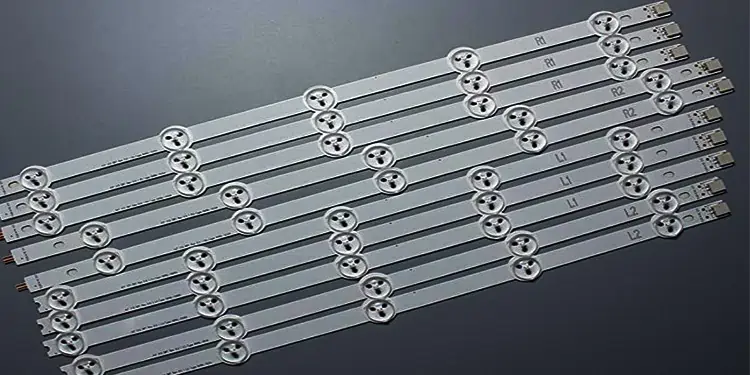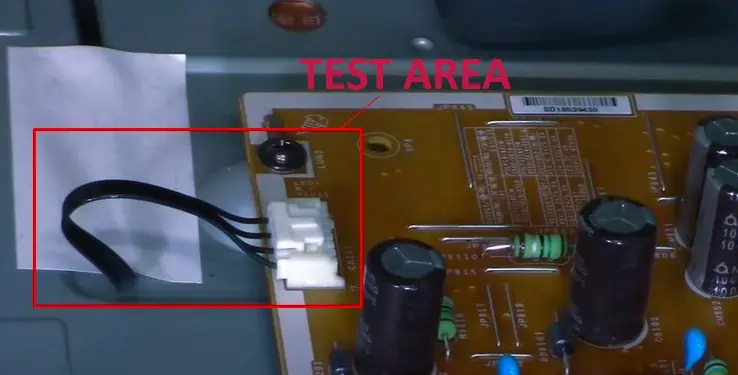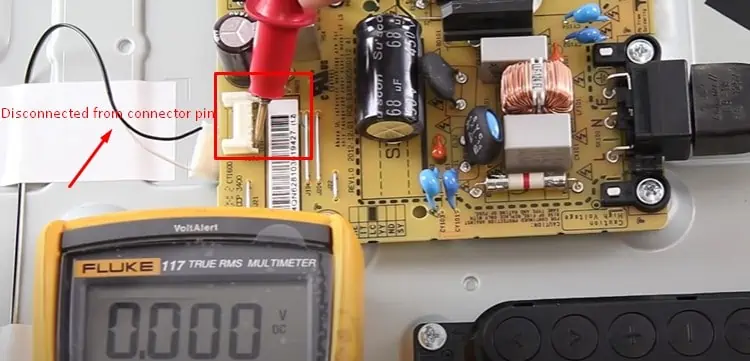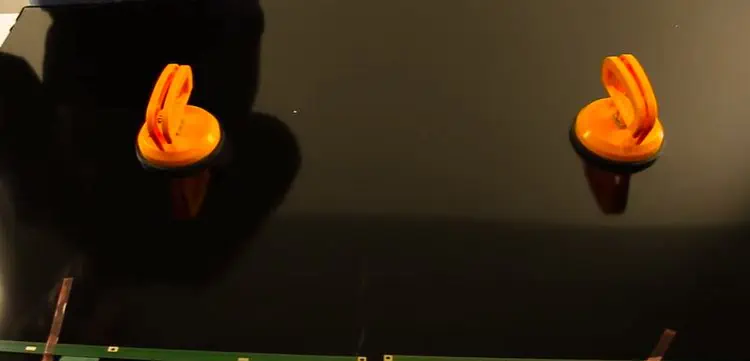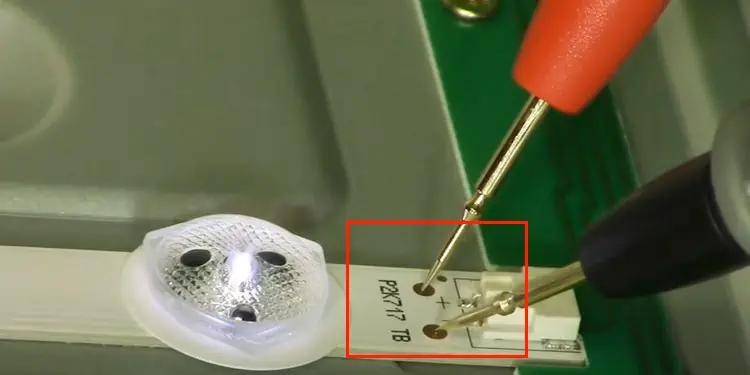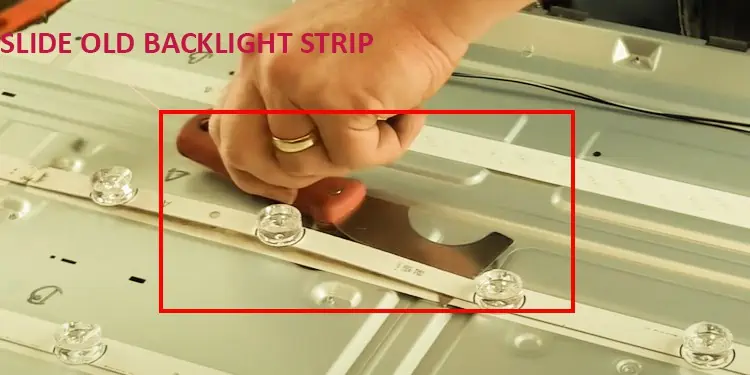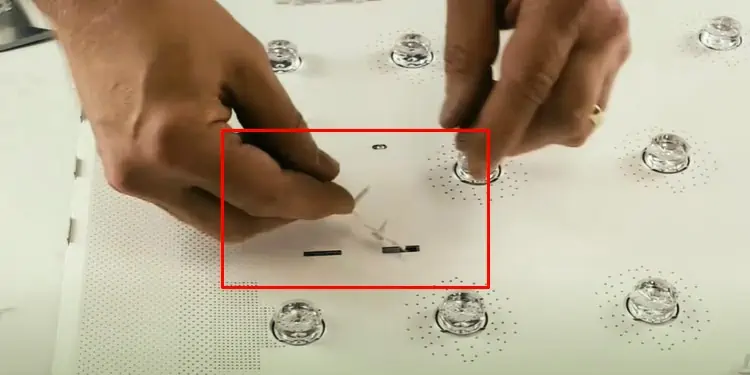Have you ever had a problem with the TV where the screen does not display any picture even when it’s turned on? In such cases, the problem might indicate damage to the backlight of the TV.
As the name suggests, “backlights” are the light sources to our TV screen; no light source results in no viewable picture on the screen.
Backlight damage is most likely caused due to problems in two essential components that make up the backlight: the Backlight Driver Board/Powerboard or the actual Backlight strips.
Do not worry; it is easier to fix than it looks. We will tackle each issue in an orderly fashion so that you can fix your TV without spending a lot of money.
Possible Causes of Backlight Failure
The backlights damage is caused due to the following possible reasons.
- Sudden power surges
- Defective backlight LED bulbs
- LED Driver board issues
- Powerboard/mainboard issues
- Physical or water damage
Backlight Failure Symptoms
- TV turns on without any display of the picture.
- A Dim screen points to defective led backlights.
- A Flickering screen is a possibility for a dying led strip.
- Dark sections are caused by some LED bulbs turning defective.
- Light Spot sections occur when the lens of these LED bulbs falls off.
- A half dark screen point to one whole side of Backlights is failing.
- Light leaking from the TV’s edges indicates LED bulbs have moved inside the TV.
How to Fix Backlight on TV?
The Backlight issue only occurs in LED TVs as QLED and OLED TVs do not have backlights. LCD TVs used backlights made up of fluorescent bulbs, but their production has now been stopped as the technology is outdated.
Things to Consider Before Testing & Repair
- Firstly, please confirm the backlight issue. An easy way is to take a white light against the screen. If the graphics show when illuminated, the device has backlight failure.
- We recommend placing the TV on a soft mat with the screen facing down to prevent any scratches on the screen.
- Take plenty of pictures on each step to trace back and reassemble the TV after repairs.
- Put screws in cups and label them so that we do not lose them during reassembly.
- LED Backlight Tester
- Screwgun or Screwdrivers according to screws in the TV
- Painter’s Tape.
- Suction Cup
- Voltage Checker/ Multimeter
- Old credit or gift card
Once the above considerations are factored in, open up the back cover of the device and start the testing & repair process.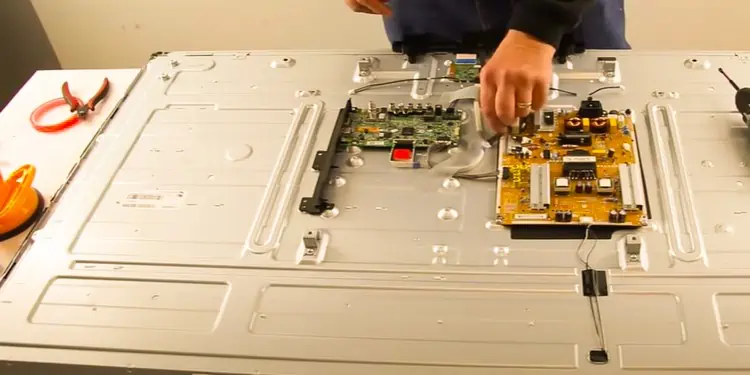
Step 1: Test the Power Supply Board & Led Strips
Most TVs feature the led driver on the powerboard itself, but some have a separate led driver board. Find the exact connection point where the backlight cable connects to the board.
Things to Consider Regarding the Testing Area
- Every board has a small chart near the area where the backlight cable is connected with the board. The chart will describe the positive and negative points in the connection.
- Set your multimeter setting to DC Volts.
- When testing with a multimeter, follow the individual instruction given below strictly. Mistakes in placing lead wires might short circuit the connection points.
- The number of wires used to connect the backlight to the board will vary according to the number of backlight strips. These wires are connected in pairs, i.e., one positive and one negative point.
Start testing the Connection Points
- Do not disconnect anything; plug in the TV and turn it on fully.
- Take the multimeter and place the Red lead on one of the positive points in the connection. Place the black lead in the negative connection point.
- Take the voltage measurements for each connection point.

Take Recommended Action According to Voltage Scenarios
If the TV didn’t have a backlight issue, each connection point would show a voltage reading of around or less than 100 volts when the backlight is connected to the board. All connection points would show a similar reading without many fluctuations.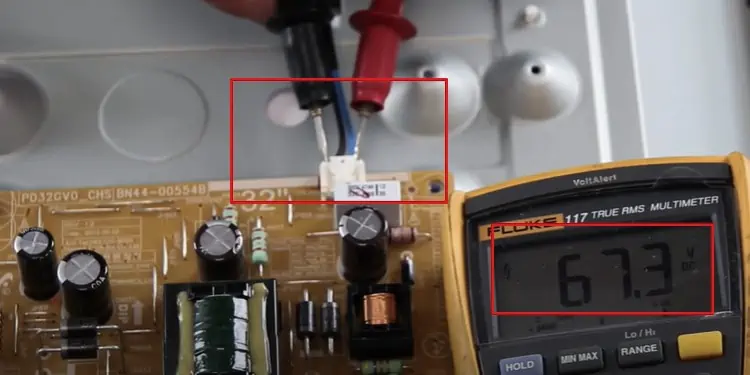
If the voltage reading is above 100-120 volts, Zero or close to Zero, follow the recommended action stated in the scenarios listed below:
- Unplug the TV and disconnect the backlight cable from the board. Once this is done, plug the TV back in and turn on the TV.
- Now use the multimeter to test the individual connector pins. The red lead goes to positive points, and the black lead gets grounded on the metal chassis of the TV.
- If voltage is above 100-120 volts, this reading indicates the board is supplying the power properly. We need to change the LED backlights.
- Suppose the voltage is zero or close to zero. Replace the Powersupply board. These boards generally range from around $60 to $200. Find the exact board according to the TV model number.

Step 2: Open the Rest of the TV
Follow the steps below if the backlight strip needs to be replaced. You do not need to open up the TV if the power supply board needs replacement.
- Remove the plastic bezel frames, TV boards & metal brackets/chassis of the TV.
- Remove the ribbon cables carefully as they are important & delicate. The TV will not work if the damage is incurred on these cables. Do not pull on them.
- Start removing the layers of the screen with a suction cup. There will be an LCD Panel and a couple of white panels beneath it.

- Use painter’s tape to keep the screen’s top layers together, prevent flexing, and maintain the order of screens during reassembly.
Step 3: Change Backlight of the TV
If the Backlight strips require replacement, read through the considerations below and then proceed to replace them.
Things to Consider Before Backlight Replacement
- Change the whole set of strips or individual strips. We do not recommend changing singular bulbs as the replacement process is tedious and requires a heating plate.
- Always buy the LED Strips according to the Display panel number sticker on the back of the metal chassis of the TV. The manufacturer will specify if they are compatible with that display panel number.
- Remember, another brand might produce the Display panel. Always buy strips according to the brand specified in the display panel, not the TV brand.
Remove Previous Installed Backlight Strips
- Start by removing the white reflective layer on top of the backlight strips. Little plastic pegs are used to lock them; push the pegs from the back of the metal chassis with a plier or by hand to unlock them.
- Take a picture of the connection area of the backlight strips with the backlight cable that goes to the powerboard. We need to join them exactly like it is after replacement.
- Unplug the backlight cable from strips.
- Locate the two circular metallic points on the starting point of each step illustrated by the pic below.
- Take your backlight tester and place the red-colored lead to the + point and black lead wire to the – point. All bulbs in that strip should light up if they work fine; if not, we need to change the whole strip.

- Take an old gift card , credit card or scraper and start taking the damaged strips out from underneath by sliding the card beneath the strips.

Install New Backlight LED Strips
- The new led strips come with double-sided tape at the bottom; slide the new strips in place and stick them.
- Some strips have holes that we can use to lock them into the TV chassis. Install them according to your TV’s previous backlight strips. If none of the option is available, stick the strips with some white masking tape.
- Do a final test with the backlight tester like before. All bulbs should light up
- Reconnect the strips to the backlight cable with the help of the picture taken before.
Step 4: Reassemble the TV
Once the backlight strips have been replaced, we will need to reattach everything. Consider the following points while reassembling the TV.
- Start by reinstalling the white reflector sheet on top of the backlights.

- Next, place the white screen layers (diffusion sheets) that we kept together on top of the reflector sheets.
- Check for any lint, fingerprints, or painter’s tape during this step and remove them accordingly.
- Reinstall the panel frame on top of the white screen layers and install the LCD panel on top of it. Make sure the panel is recessed inside the frame as failure to do so might result in cracks later.
- Reattach any metallic braces. They usually click onto the screen if aligned & placed properly.
- Attach all ribbon cables to their respective places. Use pictures taken before. Be extra delicate with them as they easily break.
- Reinstall any metallic brackets left on top of everything. These frames should clamp on the chassis of the TV.
- Once everything is secured, reconnect the ribbon cable from the back of the metallic chassis to the scan drive board. Also, start installing the TV boards on the metal chassis at the back of the TV.
- Rescrew the back cover of the TV and plug in the TV to a power source.
Conclusion
Fixing backlights is possible with a DIY approach, but it does require basic knowledge of how current, wires, and multimeters work. If you have doubts, we do not recommend tampering with the TV. Backlight fixes are traditionally a job for professionals.
